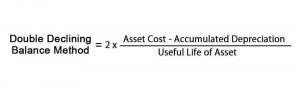Accounting for Dividend: How to Record in Financial Statements Leave a comment

If a dividend payout is seen as inadequate, an investor can sell shares to generate cash. Dividend yield refers to the percentage of the share price that gets paid back as a dividend. For example, if shares sell for $10 each and pay a $0.20 annual dividend, then the dividend yield is 2%. A company’s dividend sustainably is of paramount importance to investors. Dividend sustainably is how likely it is that a company will be able to maintain or increase its dividend payments. In order to determine whether your dividends are qualified or ordinary, you’ll need to consider the company’s ex-dividend date.
Why are dividends important to investors?
- Box 1a lists your ordinary dividends, while your qualified dividends will appear in box 1b.
- If you purchase your stock after the ex-dividend date, you will receive ordinary dividends.
- Of course, the investor can simply sell the extra shares and collect the cash.
- Companies can choose to regularly reward their shareholders by paying dividends, usually in cash, although sometimes in stock.
- This is explained more fully in our retained earnings statement tutorial.
- The investor opens and funds an account, researches the stock or fund they want to purchase, makes the purchase, and then monitors their position.
- Companies that do pay dividends tend to be larger and more established, with steady growth rather than sudden spikes.
Dividend yield should never be the only factor an investor considers when deciding whether to buy a stock. But income-focused investors tend to prefer higher dividend yields if all else is equal. That said, high dividend yields may be a sign of a stock that’s recently suffered a sharp price decline, so in some cases it may be a warning signal. Similarly, when interest rates are low, investors may re-allocate their funds from interest-bearing assets into more productive dividend-paying stocks. When a company declares that it will pay a dividend—typically every quarter, as mentioned above—the firm also specifies a record date.
- These companies pay their shareholders regularly, making them good sources of income.
- As a result, double taxation of dividend income might be frightening if you consider a portfolio of foreign equities.
- This has the effect of reducing the value of each share, but it also makes it more affordable for investors to buy more significant numbers of shares.
- Dividend-bearing checking accounts work in the same way as regular checking accounts but with the added benefit of earning interest on the account balance.
- The debit to the dividends account is not an expense, it is not included in the income statement, and does not affect the net income of the business.
- Investors evaluate companies that pay dividends on the value of annual dividends paid relative to the price of the company’s stock, which is known as the company’s dividend yield.
- In this article, we cover accounting for dividends and retained earnings.
What Is a Dividend in Finance?
Additionally, dividend payments can signal that a company is doing well financially. For example, imagine you own 150 shares of dividend stock, trading at $100 per share. If these stocks have a 2% annual dividend yield, you’ll receive 2% of $100, or $2 per share. So, your 150 shares will earn $300 in dividend https://www.bookstime.com/articles/how-to-calculate-sales-margins payments over the course of a year. Look for companies with a track record of stable and growing dividends. Stock screeners are essential in this effort—once you’ve screened for stocks with a history of dependable dividend payments, review their history to determine if the payments have steadily increased.

Which of these is most important for your financial advisor to have?
Dividends are often expected by shareholders as their share of the company’s profits. Dividend payments reflect positively on a company and help maintain investors’ trust. The rate of return on your original dividends account type investment to acquire the underlying asset will rise with time as dividends rise over time. For example, if you purchase Natural Gas Inc. at $10 per share that pays $1 per share yearly, your ROI is 10%.
Compare Some of the Top Dividend Stocks

Shares purchased on or after this date do not give the buyer the right to receive the most recently declared dividend. On the other side of the coin, if you’re selling a stock but want to receive the dividend, you must wait until the ex-dividend date to sell your shares. If you sell before the ex-dividend date, you’re also selling the right to receive the dividend.
Why You Can Trust Finance Strategists

A stock dividend is considered small if the shares issued are less than 25% of the total value of shares outstanding before the dividend. A journal entry for a small stock dividend transfers the market value of the issued shares from retained earnings to paid-in capital. Unlike cash dividends, stock dividends are not taxed until the investor sells the shares. Not all companies pay dividends, and not all investors care about them. Tax is another important consideration when investing in dividend gains.

If Company X declares a 30% stock dividend instead of 10%, the value assigned to the dividend would be the par value of $1 per share, as it is considered a large stock dividend. Many countries also offer preferential tax treatment to dividends, treating them as tax-free income. Dividend payouts may also help provide insight into a company’s intrinsic value.
Investing Basics: What Are Dividends?



